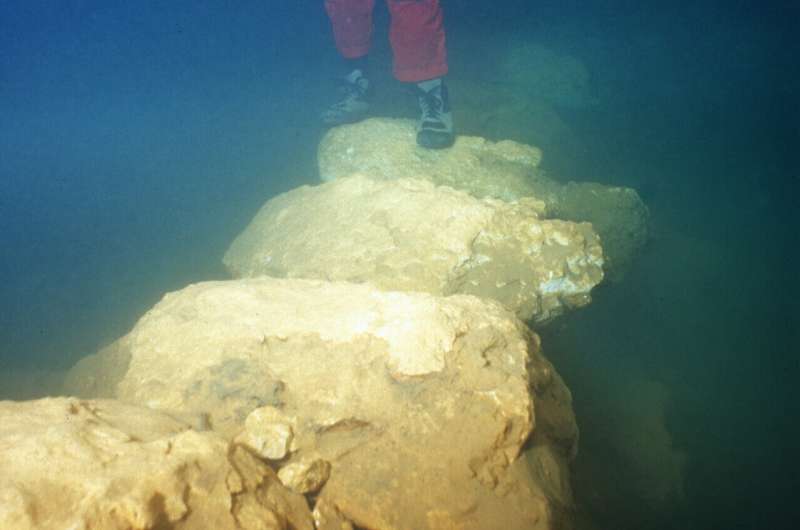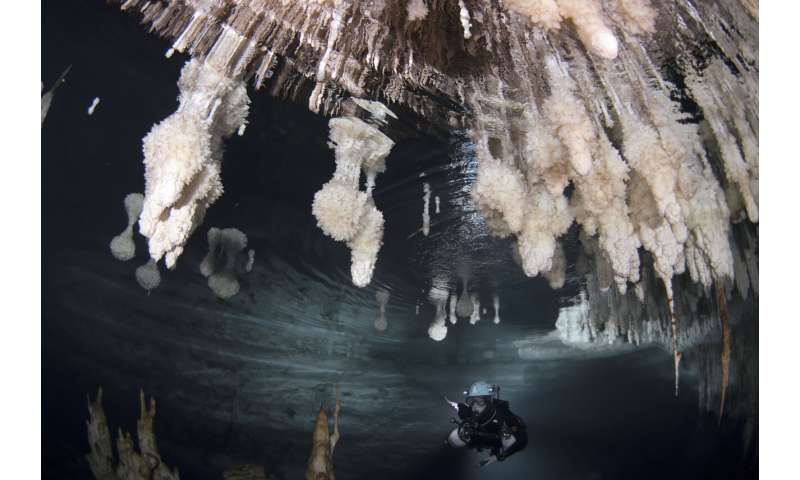This article has been reviewed according to Science X's editorial process and policies. Editors have highlighted the following attributes while ensuring the content's credibility:
fact-checked
peer-reviewed publication
trusted source
proofread
What a submerged ancient bridge discovered in a Spanish cave reveals about early human settlement

A new study led by the University of South Florida has shed light on the human colonization of the western Mediterranean, revealing that humans settled there much earlier than previously believed. This research, detailed in a recent issue of the journal, Communications Earth & Environment, challenges long-held assumptions and narrows the gap between the settlement timelines of islands throughout the Mediterranean region.
Reconstructing early human colonization on Mediterranean islands is challenging due to limited archaeological evidence. By studying a 25-foot submerged bridge, an interdisciplinary research team—led by USF geology Professor Bogdan Onac—was able to provide compelling evidence of earlier human activity inside Genovesa Cave, located in the Spanish island of Mallorca.
"The presence of this submerged bridge and other artifacts indicates a sophisticated level of activity, implying that early settlers recognized the cave's water resources and strategically built infrastructure to navigate it," Onac said.
The cave, located near Mallorca's coast, has passages now flooded due to rising sea levels, with distinct calcite encrustations forming during periods of high sea level. These formations, along with a light-colored band on the submerged bridge, serve as proxies for precisely tracking historical sea-level changes and dating the bridge's construction.
Mallorca, despite being the sixth largest island in the Mediterranean, was among the last to be colonized. Previous research suggested human presence as far back as 9,000 years, but inconsistencies and poor preservation of the radiocarbon dated material, such as nearby bones and pottery, led to doubts about these findings.
-

Stone path connecting the entrance in Genovesa Cave, Mallorca, Spain, and its subterranean lake across which the bridge was constructed. Credit: B. Onac -

Phreatic overgrowths on speleothems grow exactly at sea level, pictured above the diver in the Galeria de les Delícies in Drac Cave, Mallorca, Spain, offering a more accurate reconstruction of past sea level history. Note the submerged stalagmites that grew when sea level was much lower. Credit: M.À. Perelló
Newer studies have used charcoal, ash and bones found on the island to create a timeline of human settlement about 4,400 years ago. This aligns the timeline of human presence with significant environmental events, such as the extinction of the goat-antelope genus Myotragus balearicus.
By analyzing overgrowths of minerals on the bridge and the elevation of a coloration band on the bridge, Onac and the team discovered the bridge was constructed nearly 6,000 years ago, more than two-thousand years older than the previous estimation—narrowing the timeline gap between eastern and western Mediterranean settlements.
"This research underscores the importance of interdisciplinary collaboration in uncovering historical truths and advancing our understanding of human history," Onac said.
More information: Submerged bridge constructed at least 5600 years ago indicates early human arrival in Mallorca, Spain, Communications Earth & Environment (2024). DOI: 10.1038/s43247-024-01584-4
Journal information: Communications Earth & Environment
Provided by University of South Florida





















